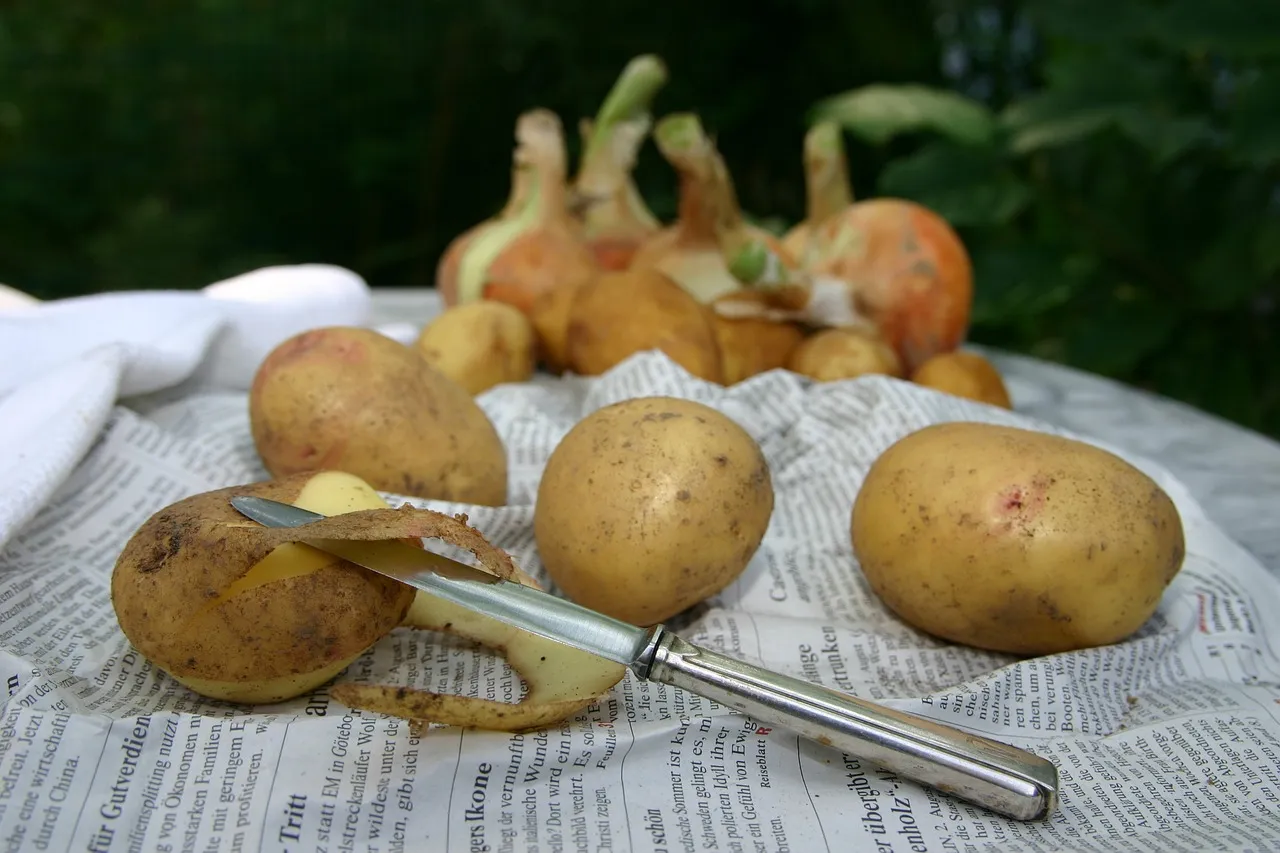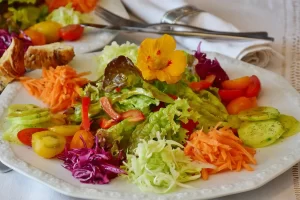In today’s eco-conscious era, sustainable cooking and zero-waste practices are paramount. Embrace green cooking with our guide, featuring eco-friendly recipes, waste reduction tips, and sustainable cooking tips. Minimize food waste and maximize flavor while nurturing a sustainable kitchen ethos.
Understanding Sustainable and Zero-Waste Cooking

Understanding Sustainable and Zero-Waste Cooking entails grasping the principles and practices that contribute to minimizing food waste and promoting environmentally friendly cooking habits. At its core, sustainable cooking involves adopting methods that prioritize the responsible use of resources, reduce environmental impact, and support ethical food production practices.
In sustainable cooking, emphasis is placed on using ingredients efficiently to minimize waste at every stage of the food production and consumption process. This includes mindful shopping practices, such as buying only what is needed, choosing locally sourced and seasonal ingredients, and opting for products with minimal packaging. Additionally, sustainable cooking involves utilizing all parts of ingredients, including stems, peels, and scraps, to maximize their nutritional value and minimize waste.
Zero-waste cooking takes sustainability a step further by actively seeking to eliminate food waste altogether. This involves creative approaches to repurposing leftovers, utilizing kitchen scraps in innovative ways, and implementing strategies to make the most of every ingredient. Zero-waste cooks often employ techniques such as batch cooking, meal planning, and preserving foods through methods like canning, fermenting, and freezing to extend their shelf life and prevent spoilage.
By understanding the principles of sustainable and zero-waste cooking, individuals can make informed choices about the foods they consume and the way they prepare meals. This includes considering factors such as food miles, production methods, and packaging materials to minimize environmental impact. Sustainable cooking also encompasses broader considerations, such as supporting local farmers and producers, advocating for food justice and equity, and promoting biodiversity and ecosystem health.
Overall, understanding sustainable and zero-waste cooking involves recognizing the interconnectedness of food systems, environmental sustainability, and personal health and well-being. It encourages a holistic approach to cooking that prioritizes mindful consumption, resourcefulness, and respect for the planet and its inhabitants. By embracing these principles, individuals can not only reduce their environmental footprint but also contribute to a more sustainable and equitable food system for future generations.
Tips for Reducing Food Waste
Tips for Reducing Food Waste encompass a variety of strategies and practices aimed at minimizing the amount of food that goes unused or discarded. By implementing these tips, individuals can not only save money but also reduce their environmental impact and contribute to a more sustainable food system. Here are some effective tips for reducing food waste:
Plan Meals Wisely: Before heading to the grocery store, take inventory of what you already have and plan your meals for the week. Create a shopping list based on your meal plan to avoid buying unnecessary items.
Buy Only What You Need: Be mindful of portion sizes and buy only the amount of food you know you will consume. Avoid bulk purchases or “buy one, get one free” deals unless you can use the extra items before they spoil.
Use Fresh Ingredients First: When unpacking groceries, prioritize using fresh ingredients that have a shorter shelf life, such as leafy greens, berries, and herbs. Save longer-lasting items like root vegetables and grains for later in the week.
Store Food Properly: Proper storage can help extend the shelf life of perishable items. Store fruits and vegetables in the refrigerator or in a cool, dark place, and use airtight containers or reusable wraps to keep leftovers fresh.

Practice FIFO (First In, First Out): Arrange your pantry and refrigerator so that older items are used before newer ones. This helps prevent items from getting forgotten and expiring before they can be used.
Get Creative with Leftovers: Instead of letting leftovers go to waste, find creative ways to repurpose them into new meals. For example, leftover roasted vegetables can be added to salads or turned into a soup, and stale bread can be transformed into breadcrumbs or croutons.
Embrace Nose-to-Tail and Root-to-Stem Cooking: Utilize all parts of the ingredient, including stems, peels, and scraps, to minimize waste. For example, vegetable scraps can be used to make homemade broth, and citrus peels can be candied or used to infuse flavor into dishes.
Freeze Excess Food: If you have more food than you can use before it spoils, consider freezing it for later. Many foods, including fruits, vegetables, bread, and cooked meals, can be safely frozen and enjoyed at a later time.
Compost Food Scraps: Instead of sending food scraps to the landfill, compost them to create nutrient-rich soil for gardening. Many cities offer composting programs, or you can start a compost pile in your backyard.
Educate Yourself and Others: Learn more about the causes and consequences of food waste and share your knowledge with others. By raising awareness and advocating for change, you can help promote a culture of mindful consumption and reduce food waste on a larger scale.
By incorporating these tips into your daily routine, you can play a part in reducing food waste and creating a more sustainable food system for future generations. Whether you’re meal planning, shopping, cooking, or storing food, there are numerous opportunities to minimize waste and make a positive impact on the environment.
Creative Ways to Use Up Leftovers
Creative Ways to Use Up Leftovers involves thinking outside the box and repurposing leftover ingredients or meals into new, delicious dishes. By embracing creativity in the kitchen, individuals can minimize food waste while enjoying exciting and flavorful meals. Here are some creative ideas for using up leftovers:
Transform Leftover Proteins:
- Leftover roasted chicken or turkey can be shredded and used to make sandwiches, wraps, or salads.
- Cooked beef or pork can be chopped and added to soups, stews, or stir-fries for added flavor and protein.
- Grilled or baked fish can be flaked and used to make fish tacos, fish cakes, or seafood pasta dishes.
Reinvent Pasta and Grain Dishes:

- Leftover pasta dishes like spaghetti or lasagna can be turned into frittatas, quiches, or baked pasta casseroles.
- Cooked rice, quinoa, or couscous can be used to make grain bowls, fried rice, or stuffed bell peppers.
Repurpose Vegetable Scraps:
- Vegetable scraps like carrot tops, broccoli stems, and onion skins can be used to make homemade vegetable broth or stock.
- Leftover cooked vegetables can be blended into soups, pureed into sauces, or added to omelets and frittatas.
Create Savory Baked Goods:
- Leftover mashed potatoes can be used to make potato pancakes, potato gnocchi, or savory muffins.
- Excess cooked vegetables or meats can be folded into savory bread dough to make stuffed bread rolls or calzones.
Make Flavorful Condiments and Sauces:
- Overripe fruits can be cooked down with sugar and spices to make jams, chutneys, or fruit compotes.
- Leftover herbs can be chopped and mixed with olive oil, garlic, and lemon juice to make herb-infused dressings or marinades.
Elevate Breakfast and Brunch:
- Leftover cooked grains like oatmeal or quinoa can be mixed with eggs and vegetables to make savory breakfast bowls or baked into hearty breakfast muffins.
- Extra vegetables or meats can be folded into omelets, scrambled eggs, or breakfast burritos for a filling morning meal.
Experiment with Global Flavors:
- Leftover curry or stew can be served over cooked grains or mashed potatoes for a hearty meal.
- Cooked beans or lentils can be seasoned with spices and used to make vegetarian tacos, burritos, or Indian-inspired dal dishes.
Get Creative with Desserts:
- Stale bread or cake can be used to make bread pudding, trifle, or French toast casserole.
- Overripe fruits can be baked into pies, crisps, or crumbles for a sweet treat.
By getting creative with leftovers, individuals can not only reduce food waste but also save time and money in the kitchen. With a little imagination and experimentation, leftover ingredients can be transformed into exciting new dishes that are as delicious as they are sustainable.
Sustainable Cooking Practices
Sustainable cooking practices encompass a range of strategies and approaches aimed at minimizing the environmental impact of food production, preparation, and consumption. These practices prioritize the use of resources in a responsible manner, support ethical and sustainable food production methods, and promote a healthier planet for future generations. Here’s a detailed description of sustainable cooking practices:
Conscious Ingredient Selection:
Sustainable cooking begins with mindful ingredient selection. This involves choosing locally sourced, seasonal, and organic ingredients whenever possible. Locally sourced foods have a smaller carbon footprint since they travel shorter distances to reach consumers, reducing greenhouse gas emissions associated with transportation. Additionally, seasonal ingredients are fresher, tastier, and often more affordable, while organic foods support environmentally friendly farming practices that prioritize soil health and biodiversity.
Support for Sustainable Agriculture:
Supporting sustainable agriculture practices is essential for promoting a healthier and more sustainable food system. This includes purchasing foods that are certified organic, fair trade, or grown using regenerative farming methods. Sustainable agriculture focuses on preserving soil health, conserving water and energy, and minimizing the use of synthetic pesticides and fertilizers. By choosing foods produced with these methods, consumers can help reduce environmental degradation and support farmers who prioritize sustainability.
Reduction of Food Waste:
Minimizing food waste is a fundamental aspect of sustainable cooking. This involves planning meals carefully, storing ingredients properly, and creatively using leftovers to prevent them from ending up in the landfill. Sustainable cooks embrace techniques such as batch cooking, meal planning, and repurposing leftover ingredients to maximize their use and minimize waste. By reducing food waste, individuals can conserve resources, save money, and reduce the environmental impact of food production and disposal.
Emphasis on Plant-Based Meals:

Plant-based meals play a crucial role in sustainable cooking practices. Plant-based diets have been shown to have a lower environmental footprint compared to diets high in animal products, as they require fewer resources such as water, land, and energy to produce. Sustainable cooks incorporate a variety of fruits, vegetables, grains, legumes, nuts, and seeds into their meals, prioritizing plant-based protein sources over animal products whenever possible. By reducing reliance on animal agriculture, individuals can help mitigate deforestation, water pollution, and greenhouse gas emissions associated with livestock farming.
Responsible Seafood Choices:
Sustainable cooking extends to seafood choices, with a focus on selecting seafood that is sourced sustainably and harvested responsibly. This involves choosing seafood species that are abundant and well-managed, avoiding species that are overfished or harvested using destructive fishing practices. Sustainable cooks look for seafood that is certified by reputable organizations such as the Marine Stewardship Council (MSC) or the Aquaculture Stewardship Council (ASC), which certify fisheries and aquaculture operations that meet strict sustainability criteria.
Waste Reduction in the Kitchen:
Sustainable cooking practices extend beyond ingredient selection to include waste reduction in the kitchen. This involves using energy-efficient appliances, minimizing water usage, and reducing packaging waste. Sustainable cooks opt for reusable containers, utensils, and shopping bags, and choose products with minimal packaging or packaging that is recyclable or compostable. By reducing energy and resource consumption in the kitchen, individuals can lower their environmental impact and contribute to a more sustainable future.
Advocacy and Education:
Sustainable cooking is not only about individual actions but also about advocating for systemic change and educating others about the importance of sustainability in the food system. Sustainable cooks support initiatives that promote sustainable food production, advocate for policy changes that prioritize environmental conservation and food justice, and share their knowledge and experiences with others to inspire positive change. By raising awareness and fostering a culture of sustainability, individuals can help build a more equitable, resilient, and sustainable food system for all.
In summary, sustainable cooking practices involve conscious ingredient selection, support for sustainable agriculture, reduction of food waste, emphasis on plant-based meals, responsible seafood choices, waste reduction in the kitchen, and advocacy and education. By embracing these practices, individuals can make a meaningful contribution to environmental conservation, support ethical food production methods, and promote a healthier planet for current and future generations.
Conclusion
In conclusion, the guide to sustainable and zero-waste cooking offers a comprehensive overview of practices and principles that empower individuals to make a positive impact on the environment through mindful food choices and resourceful cooking techniques. By embracing sustainability in the kitchen, we can reduce our carbon footprint, support ethical food production methods, and promote a healthier planet for future generations.
Throughout this guide, we have explored various strategies for reducing food waste, including conscious ingredient selection, responsible seafood choices, and creative ways to repurpose leftovers. We have also highlighted the importance of supporting sustainable agriculture, minimizing packaging waste, and advocating for systemic change in the food system.
Ultimately, sustainable and zero-waste cooking is about more than just preparing meals—it’s about fostering a deeper connection to our food, our communities, and the environment. By making informed choices about the foods we consume and the way we prepare them, we can contribute to a more equitable, resilient, and sustainable food system for all.
As we embark on our journey towards sustainable and zero-waste cooking, let us remember that every action we take in the kitchen has the power to make a difference. Whether it’s choosing locally sourced ingredients, composting food scraps, or sharing our knowledge and experiences with others, each step brings us closer to a more sustainable future.
Together, let us embrace the principles of sustainability and zero waste in our cooking practices, and inspire others to join us on this journey towards a healthier, more sustainable world. With dedication, creativity, and a shared commitment to environmental stewardship, we can create a brighter future for ourselves and generations to come.
#ReduceFoodWaste

